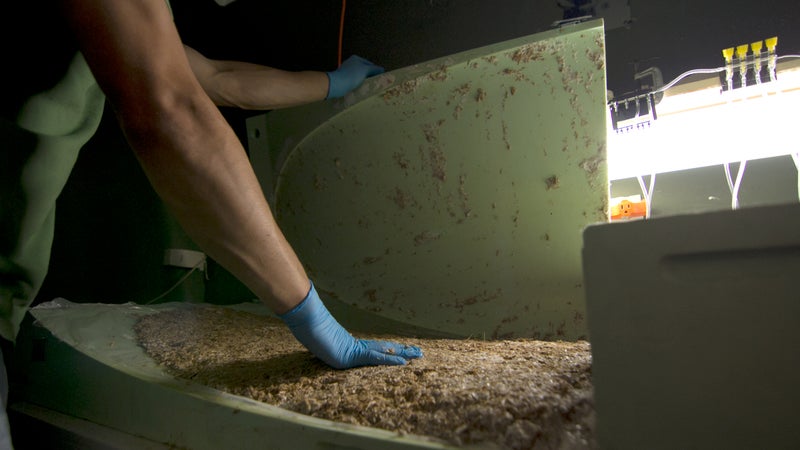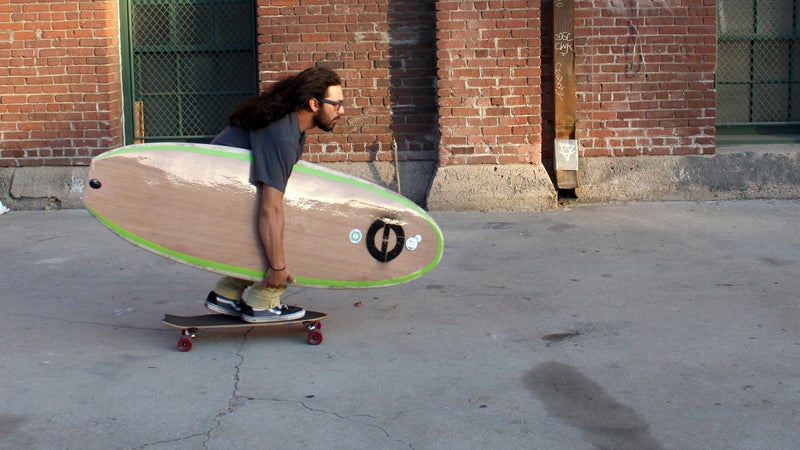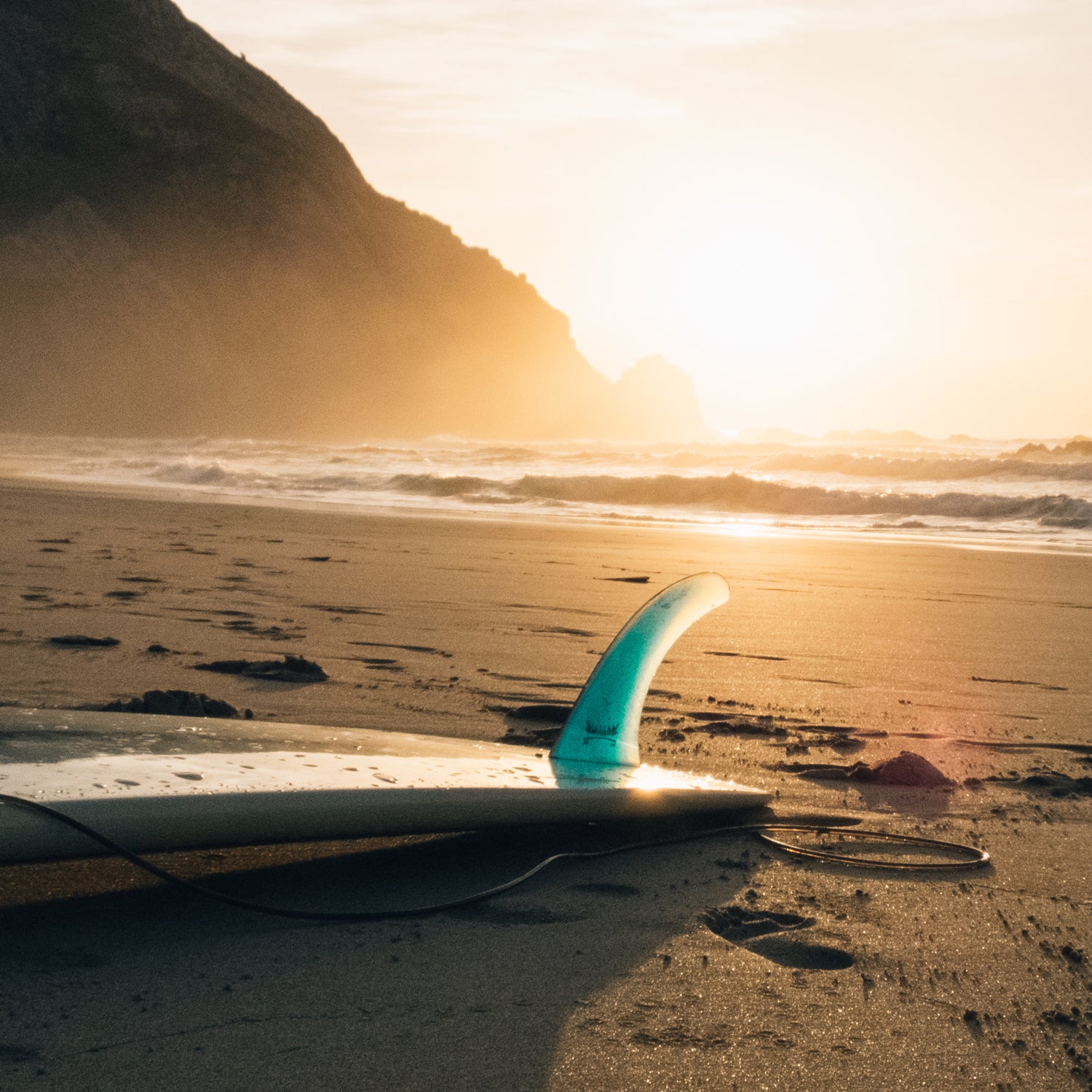What do you get when you cross a couple of eco-minded California surfers with a team of sustainability-focused New York scientists? A whole lot of innovation and experimentation—and a surfboard made from mushrooms.
You won’t find El Portobello in your nearest surf shop just yet. Mira Loma–based (SurfO) produced the first prototype of the mushroom board in May 2014. It’s still in development; SurfO co-founders David Purser and Daniel Del Toro estimate it will be at least a year before the board is market ready.
Why the wait? Because these boards are grown and hand-shaped from a natural, living substance never before tested in a surfboard. “It’s a total niche market,” Purser says. “It’s really hard to break into the business of manufacturing surfboards unless you’re doing something really unique. This is the most organic, eco-friendly model there is.”
The material, called Myco Foam, is the brainchild of New York–based , a company that combines mycelium (the white, gluelike, branching part of fungus that absorbs nutrients) with organic farm waste to develop sustainable alternatives to toxic petrochemicals that are found in many plastics and insulations—and in traditional surfboards.
“It starts as a bag of mulch like you’d buy at the hardware store,” co-founder David Purser says. “Then the mushroom eats the mulch. The strength comes from the mushroom binding with that material.”
“We are a material-science company that solves problems,” says Gavin McIntyre, co-founder and chief scientist at Ecovative. “The current problem: Our surroundings are encapsulated by packaging and construction materials. So we are literally growing those materials instead.”
Here’s how it works. Ecovative provides a kit that consists of dehydrated-mushroom materials. Individuals and businesses can purchase the kit to experiment with a wide range of applications, from beehives to sculptures to surf blanks. To rehydrate the dry mixture, just add water. The mycelium begins to act like a glue, hardening as it grows, and consumes the organic material.
In SurfO’s case, the mushroom mixture gets packed into a carefully designed surfboard-shaped mold. The material grows for up to 10 days as the mycelium starts to digest the agricultural material. Once the board comes out of the mold, it goes into a dryer to solidify and harden. It’s then laminated with a to finish it off.

“It starts as a bag of mulch like you’d buy at the hardware store and put around your plants,” Purser says. “It’s hemp, stems, cornstalks, and other organic waste material. Then the mushroom eats the mulch. The strength comes from the mushroom binding with that material.”
Sounds simple enough, but the science is far from perfect. For starters, there’s capacity.
Right now, SurfO is painstakingly crafting one board a month, with a 30 percent success rate. “Until recently, we’ve been doing it out of my garage in Redondo Beach,” Purser says. “It’s super-vulnerable to outside environmental conditions. But we’re branching out into a bigger ‘garage’ in the desert. What we need is one small, perfectly set up, environmentally controlled room with the right equipment.” The pair is hoping to revive a neglected campaign to purchase another mold and the proper lab tools so they can grow more than one board at a time.
The board is also too heavy by a couple pounds to be competitive with today’s high-performance models. To date, SurfO has sold two boards, for the hefty price tag of $1,700 each. “Right now, it surfs more like a board from the ’60s or ’70s,” Purser says. “It’s more like buying a wood board.”
While SurfO refines the process to bring the board closer to the ideal range of seven to ten pounds, the technology has proven itself on a smaller scale. Recently, SurfO has begun producing handplanes from mushroom materials—a niche others have already successfully marketed. For example, offers a range of mushroom handplanes—grown with Ecovative materials—through Patagonia.

In the end, can El Portobello ever be a legit surfing contender? For the most part, trade experts like the nonprofit founder and scientist Kevin Whilden support the concept, albeit cautiously.
“The mushroom technology is brilliant,” he says. “But there’s quite a bit of R&D to be done. Surfboard shaping with foam [traditional material] is one of the most technical applications of foam out there. The sculpting is like fine art. And they’re trying to do it with mushrooms. There’s so little known about how the different mushroom strains work.”
From a surf foundation that pioneered the first sustainable labeling and verification system for the industry, it’s not a bad prognosis. The SurfO team is so optimistic that they’ve started early prototyping of snowboards and skateboards. “We’ve had a couple of pros ride [El Portobello],” Purser says. “It’s strong, rides choppy water really well, and it’s flexible. If it were the same weight as a regular surfboard, it would dominate.”


